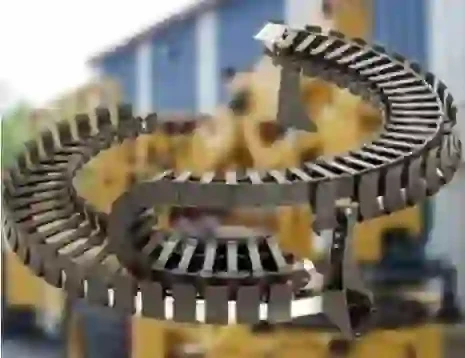cable chain cnc
Understanding Cable Chains in CNC Machines A Comprehensive Guide
In the modern manufacturing landscape, CNC (Computer Numerical Control) machines play a pivotal role in increasing efficiency, precision, and automation. However, these incredible pieces of technology come with their own set of challenges, particularly when it comes to managing cables. Effective cable management is crucial, especially for CNC machines that require mobility and flexibility in their operations. One of the most effective solutions to this problem is the use of cable chains.
What is a Cable Chain?
A cable chain, also known as a drag chain, is a flexible enclosure designed to hold and protect moving cables and hoses. These chains allow for the organized routing of wires and tubes, ensuring they do not become tangled or damaged during the operation of CNC machines. Typically made from durable materials such as plastic or metal, cable chains are designed to withstand the harsh conditions that may arise in manufacturing environments.
Importance of Cable Chains in CNC Applications
1. Protection CNC machines often operate in environments with heavy machinery, dust, and debris. Cable chains protect cables from mechanical damage, preventing costly repairs and enhancing the lifespan of wiring systems.
2. Organization With multiple cables required for power, data transmission, and fluid delivery, cable chains help organize these components efficiently. This reduces the risk of miswiring and simplifies maintenance procedures.
3. Mobility CNC machines often require movement along axes or from one position to another. Cable chains are designed to flex and rotate along with the machine's components, allowing for uninterrupted power and signal transmission throughout the machine's range of motion.
4. Safety Properly managed cables reduce the risk of tripping hazards in manufacturing environments. By containing cables within a chain, manufacturers can create a safer workspace for operators and technicians.
Types of Cable Chains
There are various types of cable chains available, each suited for different applications. Here are a few common types
1. Plastic Cable Chains These are lightweight and resistant to environmental factors such as moisture and chemicals. They are often used in lighter-duty applications.
cable chain cnc

2. Metal Cable Chains Ideal for heavy-duty applications, metal chains offer superior durability and can withstand extreme temperatures and mechanical stresses.
3. Custom Cable Chains Many manufacturers offer customizable options to meet unique specifications, including special bends, sizes, and shapes to accommodate specific machines.
Installation and Maintenance
Installing cable chains in CNC machines is a straightforward process that typically involves
1. Planning Assess the machine layout and determine the length and configuration of the cable chains needed.
2. Mounting Securely mount the cable chain at both ends of the moving part, allowing for enough clearance to accommodate bending and movement.
3. Loading Cables Carefully organize and load the cables into the chain, ensuring that there is no tension or excessive stress on the wires.
4. Final Checks Perform a thorough inspection to ensure that everything is properly secured, and the chain can move freely without obstruction.
Regular maintenance of cable chains involves checking for wear and tear, cleaning out debris, and ensuring that all components are functioning correctly. By adhering to a proper maintenance schedule, operators can prevent unexpected downtimes and extend the life of their CNC machines.
Conclusion
As industries continue to evolve towards greater automation and efficiency, the importance of effective cable management cannot be overstated. Cable chains offer a robust solution for CNC machines, enabling organized, safe, and flexible operation in production environments. By choosing the appropriate type of cable chain and ensuring proper installation and maintenance, manufacturers can significantly enhance the performance and longevity of their CNC equipment. Whether dealing with intricate electronic systems or robust hydraulic lines, cable chains can make a world of difference in the functionality and safety of CNC machines in any manufacturing operation.
In summary, investing in high-quality cable chains is not just about managing cables; it's about equipping your CNC setup with the best tools to thrive in a competitive landscape.








